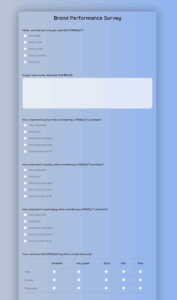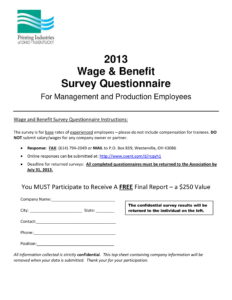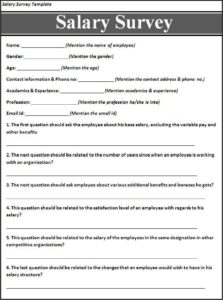In today’s competitive talent landscape, attracting and retaining top employees isn’t just about offering a good salary. It’s about presenting a holistic package of what your company offers in exchange for their skills and commitment. This complete package is known as your Employee Value Proposition, or EVP. But how do you know if your EVP truly resonates with your team, or if it’s hitting the mark with potential hires? The answer lies in listening, and one of the most effective ways to do that is through a carefully constructed survey.
An effective EVP isn’t static; it evolves with your company and with the changing expectations of the workforce. Regularly checking in with your employees allows you to fine-tune your offerings, ensuring they align with what your people truly value. This proactive approach not only helps you retain your best talent but also makes your organization a magnet for new recruits who are looking for more than just a job.
Why Understanding Your Employee Value Proposition is Crucial
Your Employee Value Proposition is essentially the promise you make to employees in return for their dedication and performance. It encompasses everything from compensation and benefits to company culture, work environment, opportunities for growth, and recognition. A strong EVP helps you stand out in the crowded job market, making it easier to attract high-quality candidates who are aligned with your values and mission. Conversely, a weak or misunderstood EVP can lead to higher turnover, lower morale, and difficulty filling open positions.
Many organizations craft what they *think* their EVP is, but without genuine employee input, it can be a shot in the dark. Perhaps you believe your company offers fantastic work-life balance, but your employees feel constantly overwhelmed. Or maybe you’re investing heavily in a perk that very few employees actually value. This disconnect wastes resources and, more importantly, can erode trust and engagement among your team.
This is where an employee value proposition survey template becomes indispensable. It provides a structured way to gather honest, anonymous feedback directly from your workforce. By asking the right questions, you can uncover what employees truly appreciate about working for you, identify areas where your EVP might be falling short, and pinpoint opportunities to enhance the overall employee experience. It shifts the perception of your EVP from an assumption to a data-backed reality.
The insights gained from such a survey are invaluable for refining your talent strategy, improving employee satisfaction, and ultimately, boosting your organization’s performance. It’s about creating a work environment where people feel valued, supported, and motivated to contribute their best work, fostering loyalty and advocacy among your team.Key Pillars of a Compelling EVP
- Compensation and Benefits: Is pay competitive? Are benefits comprehensive and valued?
- Career Development: Are there opportunities for growth, learning, and skill enhancement?
- Work Environment: Is the culture positive, inclusive, and supportive? Are resources adequate?
- Work-Life Balance: Is flexibility offered? Is burnout prevented?
- Recognition and Rewards: Are employees appreciated for their contributions?
- Leadership and Management: Are managers effective, supportive, and fair?
- Purpose and Impact: Do employees feel connected to the company’s mission and impact?
Designing Your Employee Value Proposition Survey Template for Impact
Creating an effective employee value proposition survey template isn’t just about listing questions; it’s about thoughtful design that encourages honest and comprehensive feedback. Start by defining your objectives: what specific aspects of your EVP do you want to assess? Are you focusing on compensation, culture, growth opportunities, or a blend of everything? A clear purpose will guide your question selection and ensure the data you collect is actionable.
Ensure the survey is anonymous. This is paramount for encouraging candid responses, especially when dealing with sensitive topics like compensation or management effectiveness. Clearly communicate the anonymity of the survey upfront and explain how the data will be used – typically for aggregate analysis to inform strategic decisions, not to identify individual responses. Keep the survey concise to respect employees’ time; a long, arduous survey can lead to survey fatigue and incomplete responses.
Your template should cover a broad spectrum of the employee experience. Don’t just focus on the tangible perks. Include questions about the intangible aspects too: feelings of belonging, opportunities for innovation, the quality of leadership, and the sense of purpose derived from their work. Mix qualitative questions (open-ended responses) with quantitative ones (rating scales) to get both numerical data for trends and rich, descriptive insights for deeper understanding.
Once you’ve distributed your employee value proposition survey template and collected responses, the real work begins. Analyze the data meticulously, looking for patterns, common themes, and significant outliers. This analysis will highlight areas where your EVP is strong and where it needs strengthening. Use these insights to develop concrete action plans, communicate changes back to your employees, and continuously monitor the impact of your efforts. Remember, a survey is not a one-time event but a vital part of an ongoing conversation with your team.
- Demographics: Role, department, tenure (for segmentation, but ensure anonymity).
- Compensation & Benefits: Satisfaction with salary, health insurance, retirement plans, other perks.
- Work-Life Balance: Flexibility, workload, ability to disconnect.
- Culture & Environment: Inclusion, respect, teamwork, psychological safety.
- Career Development: Training opportunities, promotion paths, mentorship.
- Leadership & Management: Manager support, communication, vision.
- Recognition & Appreciation: Feeling valued, frequency of recognition.
- Overall Satisfaction & Intent to Stay: General happiness, likelihood of recommending the company.
By regularly evaluating and refining your Employee Value Proposition, you’re not just creating a better workplace; you’re building a more resilient and competitive organization. Understanding what truly drives and retains your talent is a continuous journey, one that pays dividends in productivity, innovation, and long-term success. It fosters an environment where employees feel heard, respected, and genuinely connected to their work.
Embracing this proactive approach means you’re always adapting to the evolving needs of your workforce, ensuring your company remains an employer of choice. It’s an investment in your people, and ultimately, an investment in the future prosperity of your business, cultivating a workforce that not only performs well but truly thrives.



